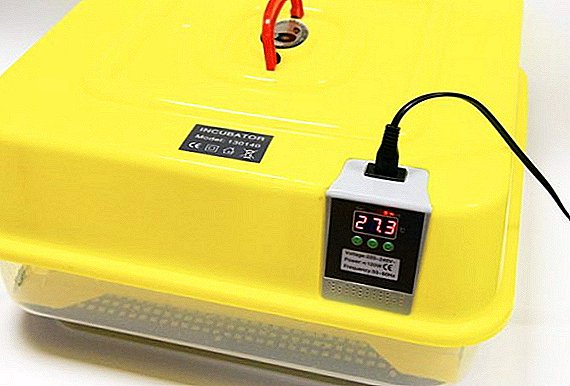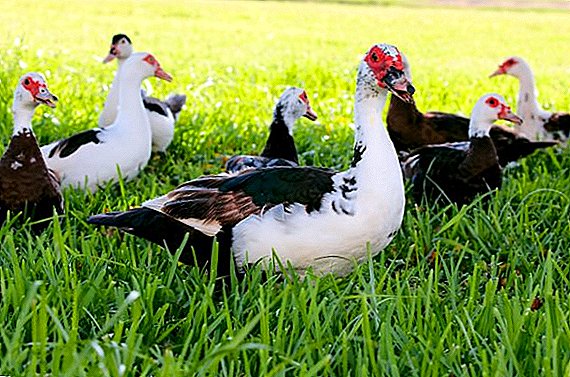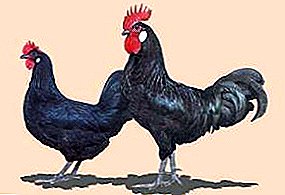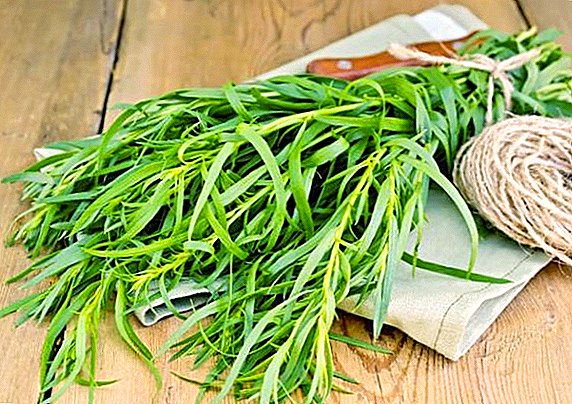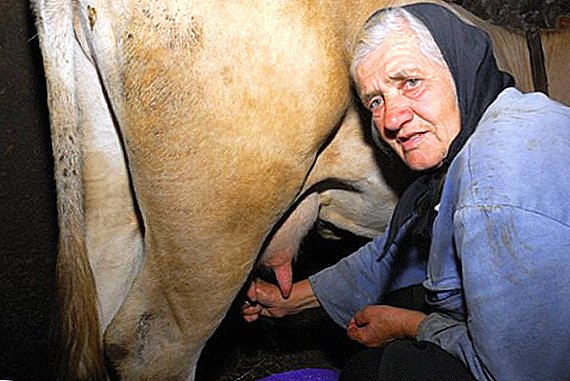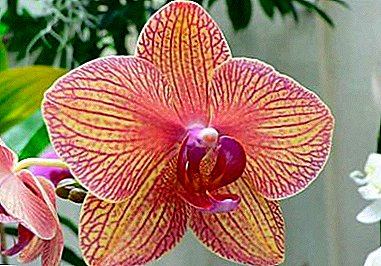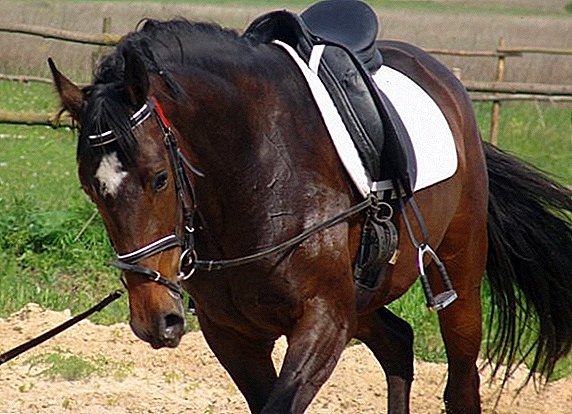 The saddle is one of the most important elements of equestrian equipment. It is only with him that horse riding is possible, and the health and well-being of both the horse and its rider depend on its quality. An improper accessory can lead to chafing, wounds and reduced performance of the horse. Consider what types of harness are, how to use them correctly and how you can make a saddle yourself.
The saddle is one of the most important elements of equestrian equipment. It is only with him that horse riding is possible, and the health and well-being of both the horse and its rider depend on its quality. An improper accessory can lead to chafing, wounds and reduced performance of the horse. Consider what types of harness are, how to use them correctly and how you can make a saddle yourself.
Horse saddle
Horse saddle consists of the following components:
- Lenchik. Solid frame, the size and shape of which depend on the parameters of the equipment itself. Made from wood or flexible plastic.
- Luke. Raised, curved curves of the front and rear edges of the saddle.
- Wing (fender). Protect the rider's legs from contact with the cinch, the trimmer and the buckles. In the front and rear of the wing stops are sometimes located - benfoors.
- Stirrups. Metal braces for the rider's leg supports, which are attached to the saddle with the help of the stirrups and the schneller.
- Putlischa. Belts that are mounted on both sides of the saddle and are threaded through special rings - Schnellers.
- Pristruga. The belt located under the wing.
- Girth. A belt that runs under the belly of a horse and prevents the harness from sliding down.
- Martingale. Special leather belt that runs between the legs of the horse and attached to the cinch and headband. Does not allow an animal to raise its head above the required level.
- Breastplate. It serves to ensure that the seat does not move backwards, especially on rough terrain or when climbing. His ends are attached to lenchik and cinch.
- Halter (potnik). A special blanket or rug that is placed on the horse’s back under the saddle and protects the skin.

Main types of saddles
Depending on the purpose of equipment varies its shape and design.
Did you know? With each step, the horse transmits an impulse to the rider, which exactly repeats the work of the human body when walking. This unique property is successfully used for the rehabilitation of people with problems with the musculoskeletal system.
Cavalry (drill)
Designed for a long stay of the rider on a horse, which implies good wear resistance of the product and a uniform load on the horse's back. Usually its frame (lenchik) is made of durable material - steel or wood. And sometimes, as in the old days, it is equipped with a special mount for portable items and weapons. 
Cossack
His main task - the opportunity for the rider at any time ride to get up straight legs. The special design of the harness, the main elements of which are archak (lenchik), wings and a pillow, helps to perform this function.
Learn more about horse harness.
In addition, there is a small handle, which can be held during the rack or perform elements of dzhigitovki. 
Women's
This type of equipment is now not very common, as it was invented in those times when the lush long skirts did not allow the ladies to sit in the men's saddle. Therefore, the appearance of the saddle, allowing you to place the legs on one side of the horse.
We recommend reading about where wild horses live.In this case, one leg was on the top bow, and the second - in the stirrup. Now such a harness can be found except on horse shows.

Competitive
Special equipment that is used for equestrian equestrian competitions with the same obstacles. The main requirement for him - a steady landing rider. To do this, the wings of equipment move forward a little, which allows you to more tightly press the legs to the sides of the horse while jumping. The back of the bow while doing round or square shape. 
Dressage
For a good dressage, you need a deep saddle in which the rider can easily fully extend his legs for better contact with the horse. Such a landing was achieved due to a significant shortening of equipment, as well as a narrow and long wing structure.
Did you know? People who constantly work with horses, noticed that the color of the animal affects its character. So, the most durable and fast are black specimens, and redheads often have an unstable character and mood.In order to be able to control the horse in one body, the upholstery of the saddle is reduced, and the shelves are made narrow and short.

Universal
This equipment has a universal classical design and is suitable for almost any purpose - walking, training, hunting and amateur equestrian sports. In addition, it is the best choice for beginners who only learn the basics of riding. 
Race
The design of the equipment is made on the basis of the need to reduce the load on the animal during the races. It also implies the special position of the rider - standing on short stirrups. Therefore, the race harness has a small weight and a simplified form with an almost flat seat and short stirrups. 
Officer (Warsaw)
This type of equipment is designed to participate in military parades and long horse trips. In addition, it is found on horseback riding police. The harness is characterized by the presence of numerous mountings for weapons and other things needed by the military or police. 
Cowboy (Western)
This is a classic outfit of American cowboys, providing a comfortable fit and good stability of the rider. Its design allows you to free your hands and stay on the saddle even with sudden changes in the movement of the horse.
Read more about how to breed horses at home.
The saddle has a deep shape with a high back bow, it also has a horn for fastening the lasso. 
Triple
This type of equipment resembles a universal and is also well suited for all types of riding. Its main difference is the wings pushed forward, which makes it possible to change the normal landing to a field one at a cross-country race. 
Australian
It is an attempt to combine the convenience of cowboy gear with the possibility of the classic management of a horse officer's saddle. It combines the comfortable fit of the rider and the convenience of the animal itself, which makes it possible to use this saddle for long walks.
Important! Due to the high back of the bow, the expression "sit like a chair" is particularly suitable for the Australian saddle and western. Their fixed landing greatly reduces the risk of the rider falling.Equipped with additional hard stops for the knees and a pristega located on top of the seat. Compared to Westerns, it has more pronounced shelves.

Spanish
This equipment is the European analogue of the Australian saddle. It is distinguished by higher sides and is used by experienced riders, since, compared to the classic, it requires some skill when working with shovel. 
Bezlenchikovoe
It is a soft, plastic equipment, gently adjacent to the horse's back. It is the most gentle to the back of the animal and weighs very little, therefore it is used for horses with minor injuries or diseases of the back. A gel pad is usually mounted on top of such a saddle, which makes it possible to further soften the effect on the back of the animal. 
Pack
Equipment designed to carry large and bulky goods on horses. It is used, for example, in distant tourist or mountain hikes.
You will probably be interested to learn more about hakamor for the horse.
Its design assumes a tighter fit to the body and the presence of wide girths and stitches that prevent the load from sliding down on a sloping terrain. There are also many mounts for the pack. 
How to make a saddle for a horse
Independent production of equipment for the horse - not the easiest thing. Therefore, if you do not have special skills and experience, it is better to purchase the finished product in a specialized store. Moreover, you can not only choose any model, but also order it according to your individual design.
Important! If you have a foundation from old equipment, then this can greatly facilitate the work. It will be necessary only to repair Lenchik and add other necessary elements.But if you did decide on this job, try to start with the simplest model, based on the usual wooden Lenchik - from the front seat.
Tools and materials
For the manufacture of harness need the following materials and tools:
- wooden plank;
- cardboard or heavy paper;
- artificial or genuine leather, or durable fabric;
- wire;
- foam rubber;
- felt;
- belts;
- hammer;
- file;
- construction stapler;
- nails and staples;
- knife and scissors.

Manufacturing steps
Step-by-step work plan:
- Make measurements of the horse at the highest point of the withers, at the point of the front of the bows (4 fingers below the shoulder blades), in the bend of the back and at the point of the end of the seat (not more than 18 vertebrae). Tightly attach the wire to form a bend.
- Transfer the obtained measurement data and transfer the sample of the bend to the cardboard, draw a framework diagram for the Lenchik and cut it along the contour.
- Cut two shelves from the board or plywood and join them with strong wire so that they hold the shape on the horse's back. In each shelf to make holes for girths.
- Lay the pattern of Lenchik on a wooden blank, cut it out, give it a smooth shape and attach it to the shelves with nails.
- Make upholstery, cutting foam rubber along the same billet and attaching it to the frame. For the shelves to make a felt lining.
- Make prints and girths of belts, or buy ready-made in a store. For each pristugu attach the stirrup, cinch secure in the shelves.
- Fill the stapler with staples and wrap up the frame with soft skin, tightly attaching the material to a wooden base.
- Fasten the stirrups. Saddle ready.

How to put a saddle on a horse
It is necessary to accustom a horse to equipment only after it has passed basic training, knows and carries out the basic commands and trusts its owner.
We advise you to read about how to harness a horse.
When putting the saddle on the horse, the following steps should be followed:
- check the condition of the back of the animal, sweeping it with your hand, and remove all foreign objects - grains, prickles, crumbs;
- put a saddle pad - a small soft bedding, fur shock absorber or gel pad to prevent rubbing the back;
- stand to the right of the horse, install the saddle (start from the top, gradually lowering), lower the girths in the right place;
- gradually, starting with the first hole of the belt, fix the desired position and tighten the girths;
- check the tightness of the girths, make sure the buckles are uniform;
- protect the wing of the saddle by pulling the flap down.
Video: how to saddle a horse
How to mount a horse in the saddle
To begin with, you should check the tension of the girth before landing. Weakly stretched girths can cause the saddle to slide sideways when landing or during movement.
Important! The first departures with new equipment should be short, and after them you should carefully examine the horse's back. Traces of scuffs may indicate that the saddle does not fit.
Step by step instructions for boarding a horse:
- Stand sideways at the horse's shoulder on the left with reins disassembled as when driving in a rein.
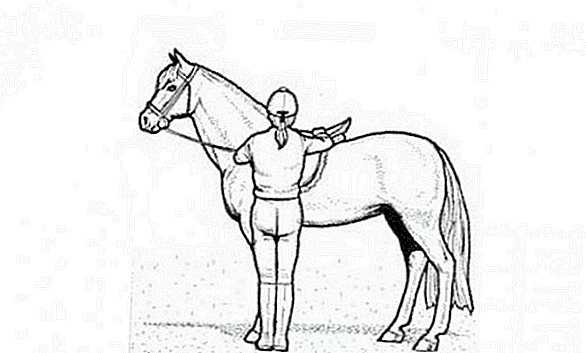
- Turning to the right, the right hand to throw a halter over the horse's head, aligning it and pulling.
- Put the left hand on the halter and neck, grabbing a strand of the mane, make a half turn to the right, take the stirrup with your right hand, turning it towards you with the outer side.
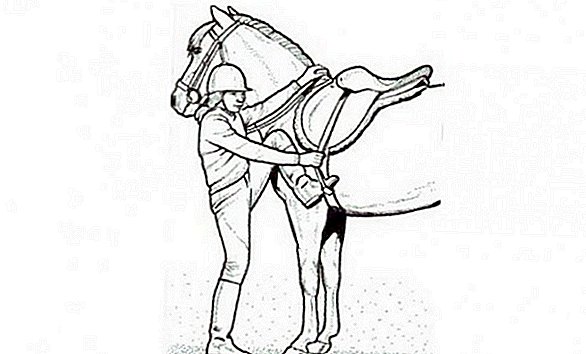
- Insert the left foot in the stirrup, right hand to take the back of the bow and at the same time push the right foot with your hands to reach the stop on the left foot, stretched out on the stirrup.

- Transfer the right hand to the front of the saddle, transfer the straight right leg through the croup of the horse, at the same time turning its face forward and gently lowering it into the saddle.
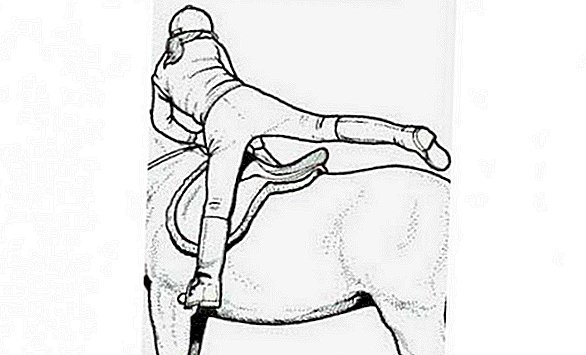
- Insert the right foot into the stirrup outside, disassemble the reins and assume the correct seating position.
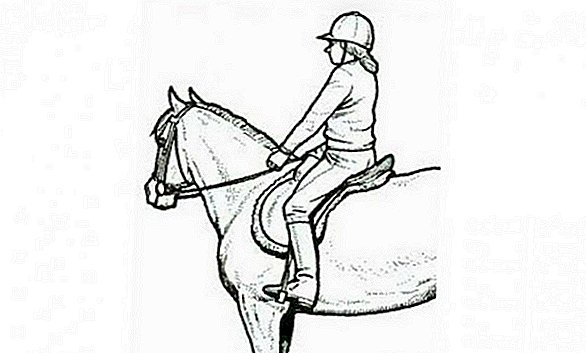
Now you know that the correct saddle is real horse armor. Therefore, it is necessary to approach his choice responsibly and make it yourself only if you are confident in your abilities and know all the design features.
Did you know? The horse’s unique quality is its viewing angle, approaching 360 °. This means that the animal is well aware of what is happening right behind it. In addition, acute vision allows the horse to distinguish objects well even in the dark.The vast majority of riders use industrially manufactured equipment, the structure of which conforms to all existing standards. And with a quality saddle, horseback riding becomes a great pleasure for both man and animal.







